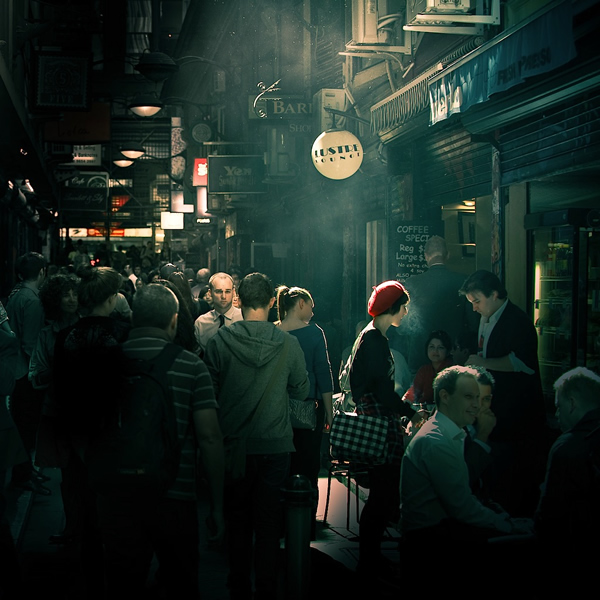The Best Strategy To Use For Street Photographers
The Best Strategy To Use For Street Photographers
Blog Article
Street Photographers Fundamentals Explained
Table of ContentsStreet Photographers Fundamentals ExplainedThe Single Strategy To Use For Street PhotographersStreet Photographers Things To Know Before You BuyThe 7-Second Trick For Street PhotographersNot known Incorrect Statements About Street Photographers
A category of digital photography that records day-to-day life in a public area. The actual publicness of the setup makes it possible for the professional photographer to take honest photos of complete strangers, typically without their understanding. Street digital photographers do not always have a social function in mind, but they favor to isolate and catch minutes which might otherwise go undetected (Street Photographers).He was affected by numerous of those that affected the street digital photographers of the 1950s and '60s, he was not mainly interested in recording the spirit of the road., who worked side by side with digital photographers trying to catch the significance of metropolitan life.
Due to the fairly primitive technology available to him and the long direct exposure time called for, he had a hard time to record the hustle and bustle of the Paris roads. He trying out a collection of photo methods, trying to discover one that would enable him to record motion without a blur, and he found some success with the calotype, patented in 1841 by William Henry Fox Talbot. As opposed to Atget, photographer Charles Marville was employed by the city of Paris to produce an encyclopaedic record of Haussmann's urban planning job as it unfolded, hence old and new Paris. While the photographers' subject was essentially the very same, the outcomes were considerably different, demonstrating the impact of the professional photographer's bent on the personality of the pictures he produced.
Provided the great top quality of his pictures and the breadth of product, engineers and artists commonly acquired Atget's prints to make use of as recommendation for their very own job, though business rate of interests were hardly his main motivation. Instead, he was driven to picture every last residue of the Paris he loved.
Street Photographers - Truths
They reveal the city through his eyes. His job and fundamental understanding of digital photography as an art type acted as inspiration to generations of photographers that adhered to. The following generation of road digital photographers, though they likely did not describe themselves as such, was introduced by the photojournalism of Hungarian-born photographer Andr Kertsz.
Unlike his peers, Brassa made use of a larger-format Voigtlnder cam with a longer direct exposure time, requiring him to be more computed and thoughtful in his practice than he could have been if utilizing a Leica. (It is thought that he might not have actually been able to afford a Leica back then, yet he did, nevertheless, utilize one article in the late 1950s to take colour photographs.) Brassa's photos of the Paris abyss illuminated by artificial light were a discovery, and the compilation of the series that he released, (1933 ), was a major success.
Cartier-Bresson was a champion of the Leica camera and one of the very first photographers to optimize its abilities. The Leica allowed the digital photographer to communicate with the environments and to capture minutes as they took place. Its reasonably tiny size additionally helped the photographer fade right into the history, which was Cartier-Bresson's preferred technique.
Street Photographers for Dummies
It is as a result of this fundamental understanding of the art of photo taking that he is commonly attributed with finding the tool throughout once more approximately a century considering that its development. He took photographs for greater than a half century and affected generations of professional photographers to trust their eye and intuition in the moment.
These are the questions I will try to respond to: And afterwards I'll leave you with my own definition of street digital photography. Yes, we do. Let's kick off with specifying what an interpretation is: According to (Street Photographers) it is: "The act of specifying, or of making something precise, distinctive, or clear"
No, absolutely not. The term is both limiting and misleading. Sounds like a road photography should be photos of a streets appropriate?! And all street photographers, besides a tiny number of outright beginners, will totally appreciate that a street is not the vital element to road digital photography, and really if it's a photo of a road with perhaps a couple of dull people not doing anything of interest, site web that's not road digital photography that's a picture of a street.
The Buzz on Street Photographers
He makes a legitimate factor do not you believe? While I concur with him I'm not certain "honest public photography" will certainly capture on (although I do kind of like the term "honest digital photography") since "road photography" has been around for a long time, with numerous masters' names attached to it, so I believe the term is right here to remain (Street Photographers).
You can fire at the coastline, at a festival, in a click to read street, in a park, in a piazza, in a cafe, at a museum or art gallery, in a metro terminal, at an event, on a bridge, under a bridge ...
Yes, I'm afraid we terrified no choice! Without regulations we can not have a definition, and without a meaning we do not have a genre, and without a category we do not have anything to specify what we do, and so we are stuck in a "rules interpretation genre" loop!
The Definitive Guide to Street Photographers

Report this page